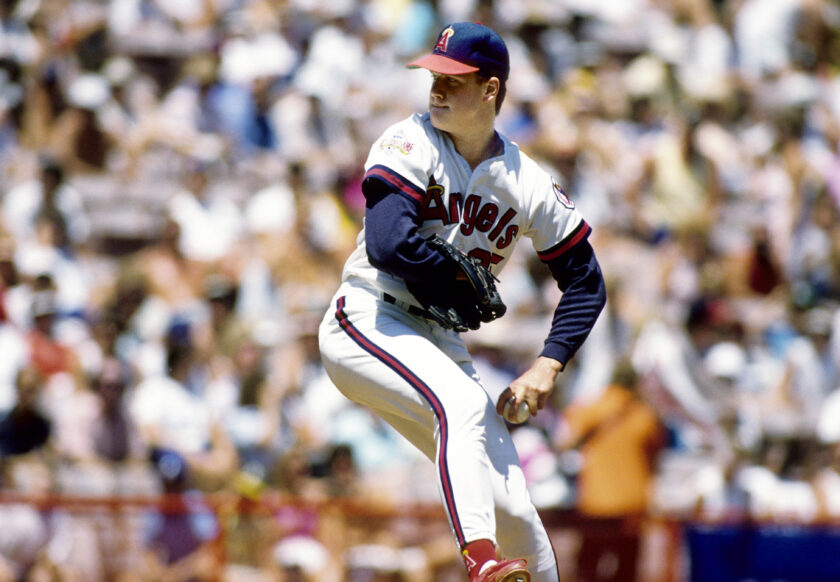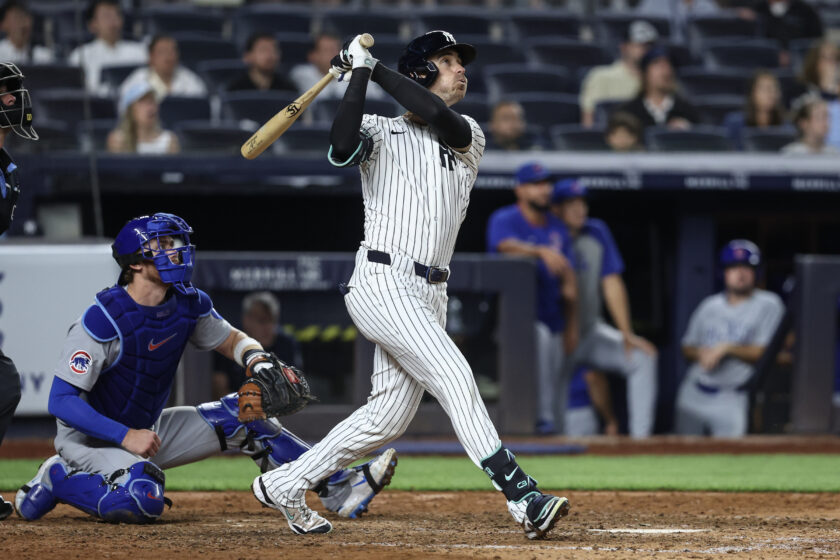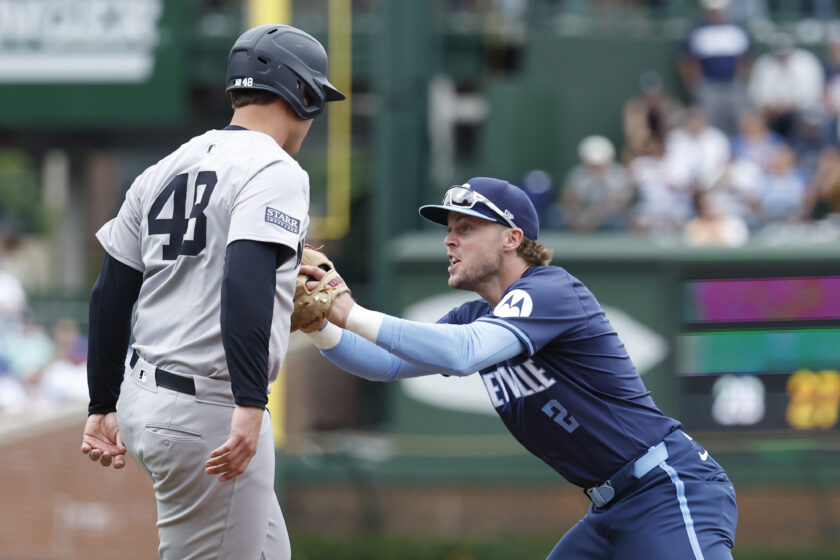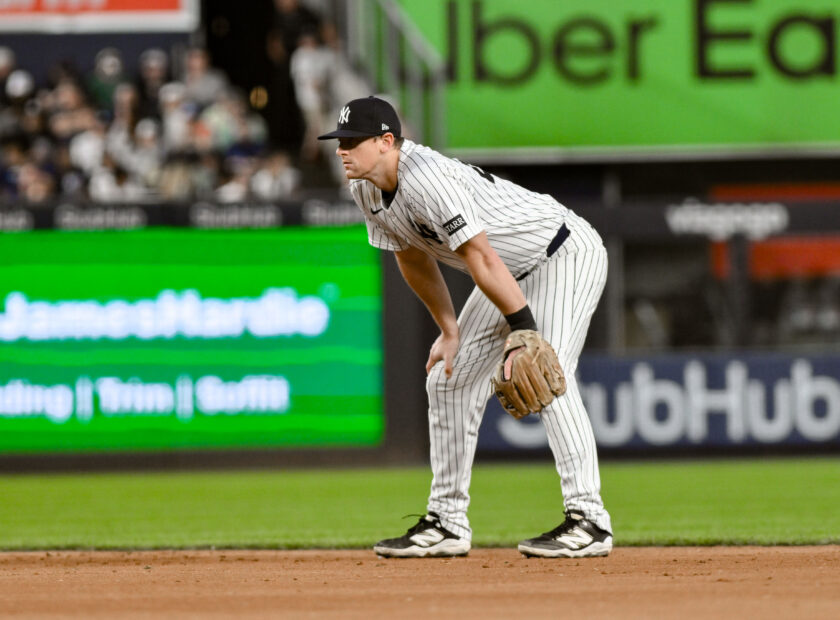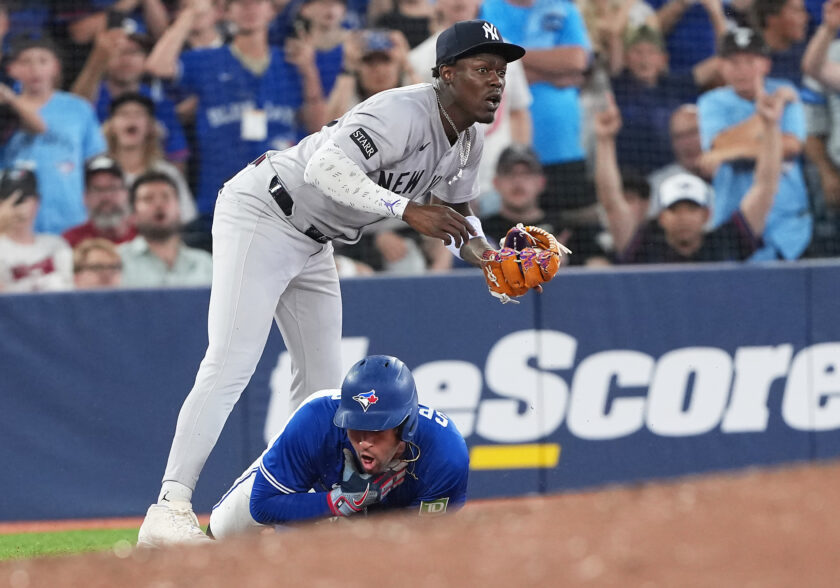This Is The Aaron Hicks The New York Yankees Traded For
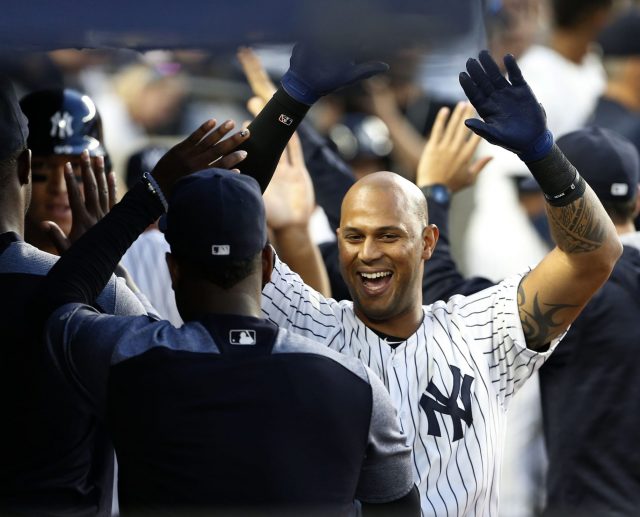
Coming off a rocky start to his New York Yankees career, Aaron Hicks is proving why his organization brought him in more than a year ago.
When the New York Yankees traded John Ryan Murphy to the Minnesota Twins on November 11, 2015, for outfielder Aaron Hicks, Brian Cashman was hoping to obtain versatility and production from his fourth outfield spot. What he got, however, was a polar opposite.
Sure, he had a couple of web gems and even turned it around after the Yankees dealt Carlos Beltran to Texas (.276), but the switch hitter slashed .217/.281/.336 in 123 overall games including a dismal .484 OPS against left-handed pitching.
[sc name=”Yankees Link Related” link=”https://elitesportsny.com/2017/05/06/new-york-yankees-youth-movement-revitalizing-brett-gardner/” text=” Yankees Youth Movement Is Revitalizing Brett Gardner” ]
With that, there were many questions regarding his second stint in the Bronx. Is he only productive when given everyday at-bats? Can he adequately fulfill his backup role of filling in for the lefty-swinging Brett Gardner and Jacoby Ellsbury? Or will 2017 be more of what we saw in 2016?
Through the first 27 games of the season, Aaron Hicks is showing everyone that he can not only backup Yankees’ starters, but provide a sufficient replacement when called upon.
In 57 at-bats, the 27-year-old owns a .316/.444/.632 slash line with an OPS of 1.076 and five home runs. For come context, Hicks didn’t his fifth home run until Aug. 12 last season and posted a win probability added (measures a player’s contribution) of -1.485 throughout the entire year. This year, he’s on a 38 home run pace and is maintaining a 0.615 win probability.

Hicks’ OPS+ of 190 is also second-best to only the red-hot Aaron Judge among Yankees hitters and among major league outfielders with at least 70 plate appearances, Hicks’ OPS+ is the seventh-best.
While some can make the argument that this type of play warrants everyday time (he only has 57 at-bats), the Yankees envisioned things going this way when they pulled the trigger on the trade two Novembers ago. [sc name=”Yankees Center Right” ]
Gardner has hit five home runs over his last six games and is also 10-for-25 (.400) since batting .188 entering play on April 29, Ellsbury was hitting a respectable .282 before going down with an injury and Judge is leading the majors in a ton of offensive categories including home runs (13). Simply put, no starter deserves to lose time.
What Hicks is doing, however, is step in when the Yankees need him the most. Since Ellsbury has been out of the lineup with a nerve issue in his left elbow, Hicks is 5-for-12 with three RBI as the step-in centerfielder.
Brett Gardner is hitting .105 against lefties this season including a strikeout rate of 44 percent. Hicks, who was actually brought in last season to mash lefties (.870 OPS vs LHP in ’15), is slashing .304/.370/.478 against southpaws to start the year.
In the end, what we’re seeing from Aaron Hicks is exactly what Cashman traded for: an outfielder with the ability to play all three outfield positions, hit well against lefties when southpaws are primed to face the lefty-swinging 1-2 punch and, most importantly, produce when his name is called no matter how infrequent.
[sc name=”Yankees Links” ]
Will it last throughout the entirety of the season? Perhaps not and we might even see Hicks fall back to his production line from 2016. Obviously, that shouldn’t be out of the question. But, what we have seen from Hicks this April has been one of the focal points in the Yankees’ best start since 2010.
[sc name=”Yankees Link Next” link=”https://elitesportsny.com/2017/05/06/new-york-yankees-josh-rogers-lighting-tampa-fire/” text=”Righty Prospect Is Lighting Tampa On Fire” ]Christian Kouroupakis covers the New York Yankees and is the Editorial Director for ESNY. Interact with him and view his daily work by “liking” his facebook page and follow him on Twitter. All statistics are courtesy of Baseball Reference.com unless otherwise noted. Don’t hesitate to shoot him an email with any questions, criticisms, or concerns.

